It was Monday, February 22nd, 1965, and a headline on the front page of The Irish Times asked a vital question about the moon: will man sink into the surface?
On the 50th anniversary of the moon landing – July 20th, 1969 – the question seems absurd. We’ve seen the pictures and heard Neil Armstrong’s crackled one-liner, issued as he left the lunar module on the 21st. But in 1965 the lunar terrain was a real concern.
“The pictures taken by America’s Ranger 8 spacecraft have left open the big question – is it safe to put a man on the moon?” reads the report. The story sits beneath an aerial view of the lunar surface, and to the left of the day’s lead; a report about the assassination, the day before, of US civil rights activist Malcolm X.
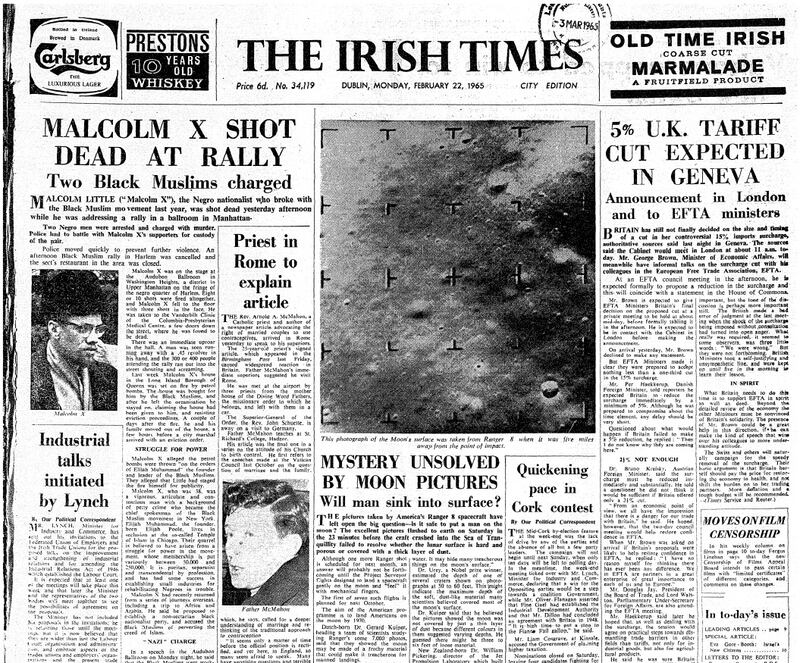
Experts theorised. One suggested the terrain had the texture of crunchy snow. Another, Dr Gerard Kuiper, who headed a team that studied the photographs, said the material would be frothy and “may hide many treacherous things on the moon’s surface”.
On July 21st, 1969, The Irish Times's front page carried a photograph from the surface alongside head shots of Neil Armstrong and Buzz Aldrin. The headline read: "Two men walk on the Moon."
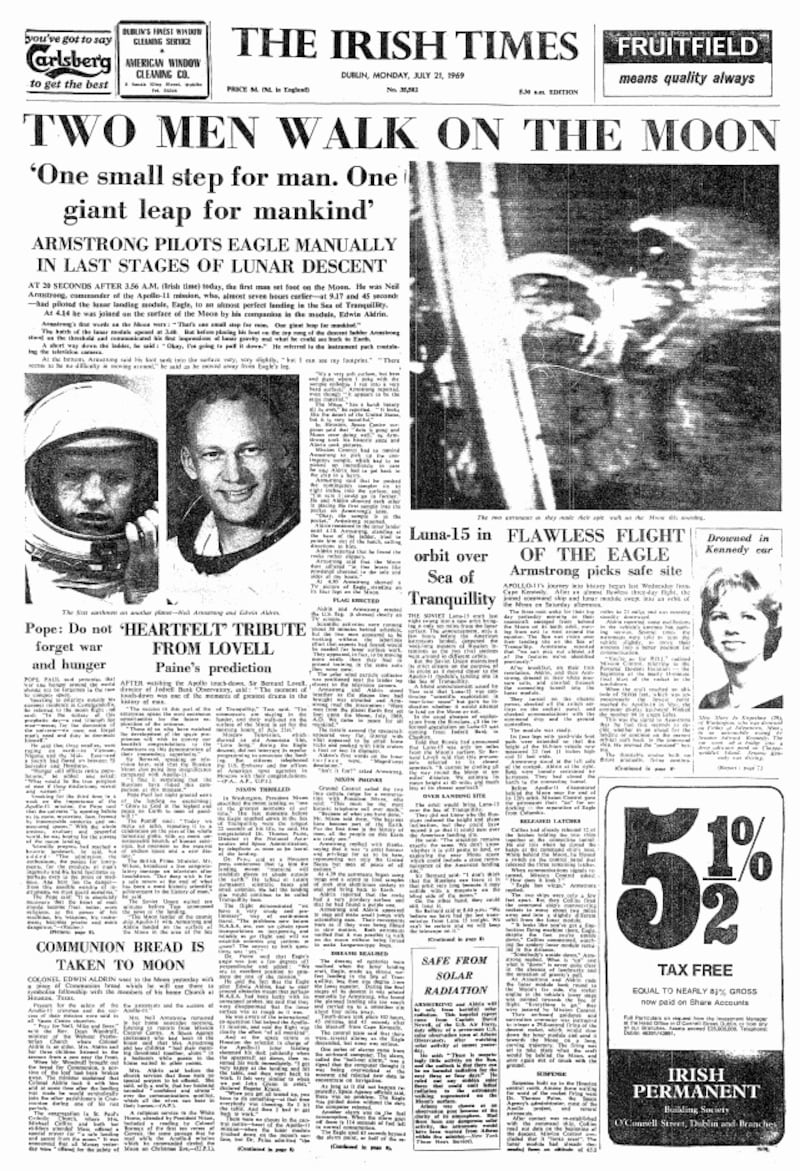
"It's a very soft surface, but here and there where I poke with the sample collector I run into a very hard surface," said Armstrong, describing the "stark beauty" surrounding him on his first moonwalk (and answering a four-year-old question for Irish Times readers). "It's like much of the high desert of the United States. It's different but it's very pretty out here."
The technical aspects of the mission – the “Flawless flight of the Eagle” – were covered on the same page, with an update on the unmanned spacecraft Luna-15 – the Soviet horse in the moon race – which was orbiting the moon. It crashed the same day.
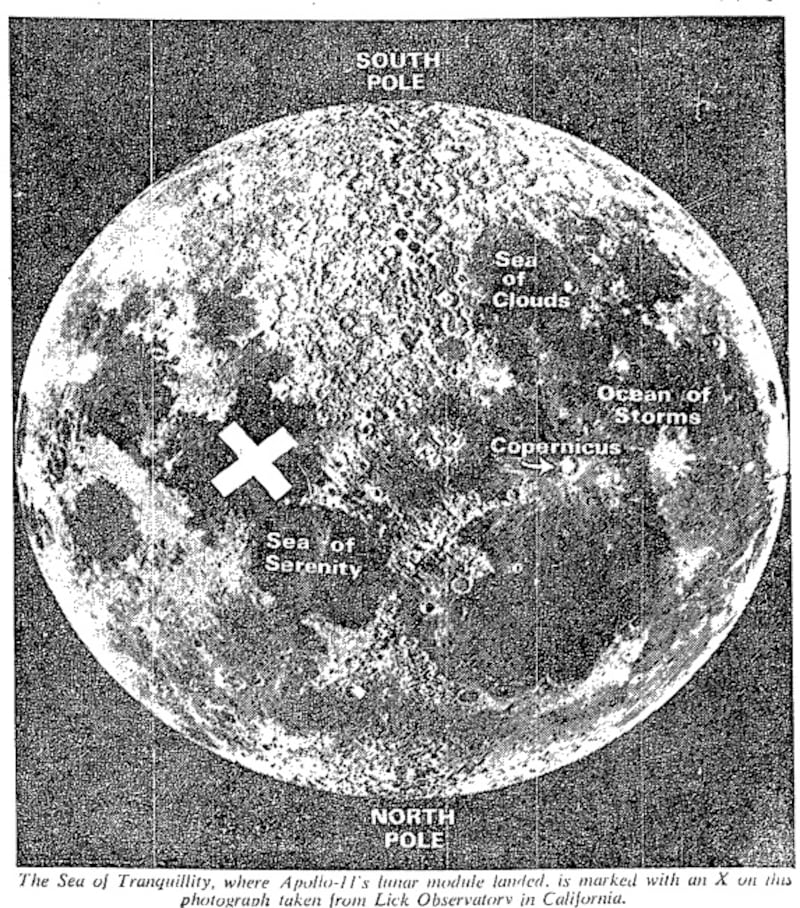
Armstrong left the lander just after 3.56am (Irish time), making the extensive coverage in that morning’s paper something of a marvel in itself.
The leader, simply titled “Moon”, said the “oldest and wildest dream of the human race has been realised”. It was written after the landing, but before Armstrong actually set foot on the surface.
The inside of the edition featured a piece on space food – “good, but not like home!” – and a tangential Irish angle - astronaut Michael Collins’s wife Patricia was the daughter of a Mayo man.
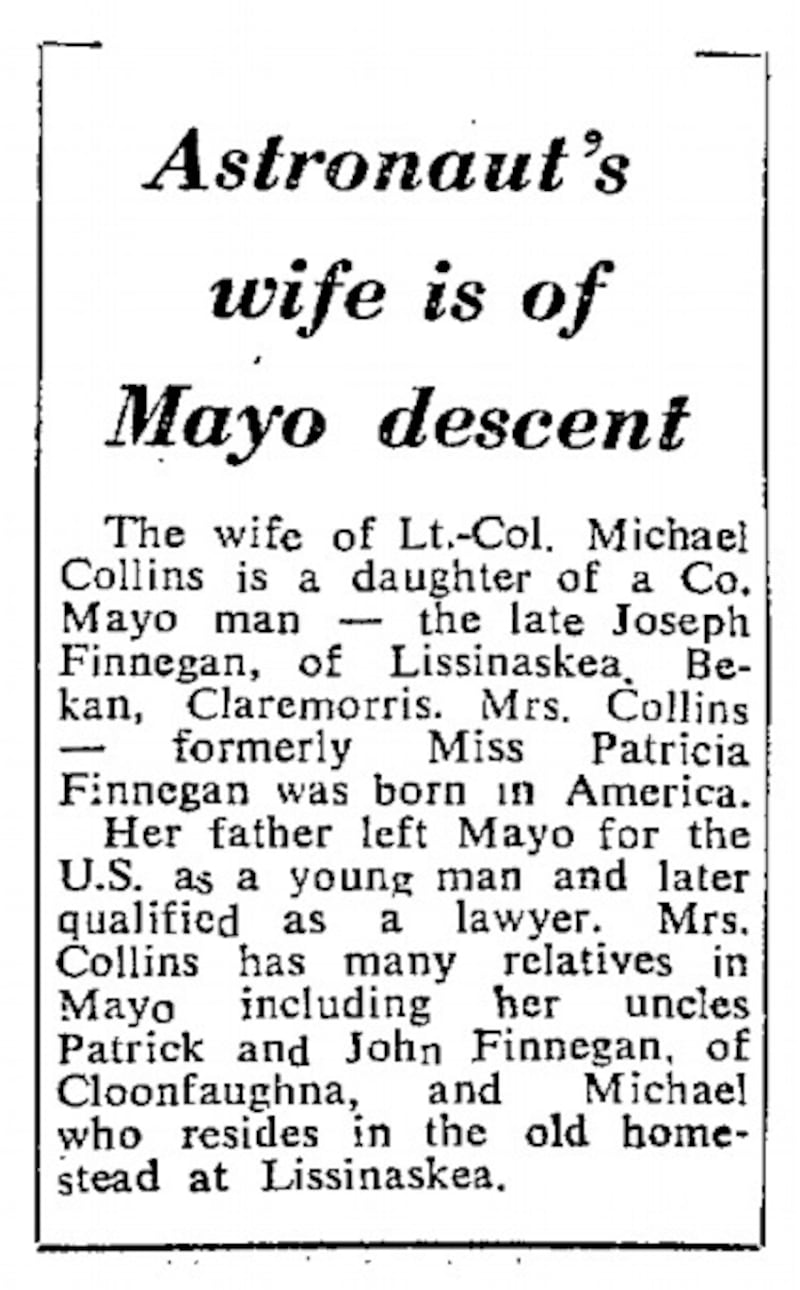
Key numbers
Key numbers were revealed in the following days: about 600 million people reportedly watched the live broadcast; 30,000 signed reserve lists for flights to the moon; and William Hill lost nearly £10,000 to a punter after the landing. (The bookmaker then placed odds of 1000/1 on a similar Mars mission.)
Praise was widespread. But the true value of such an expensive project was debated. The pope took the chance to play it down, reminding people not to lose sight of earthly affairs.
“Hunger still afflicts entire populations,” said Paul VI from his summer residence at Castel Gandolfo. “What would be the true progress of man if those misfortunes persist and worsen?”
Underneath was an unrelated story, headlined: “Communion bread is taken to Moon.”
Author and columnist Kate O’Brien was bored with the fanfare. She respectfully threw the cold water of reality upon the buzz attached to “this Moon thing”.
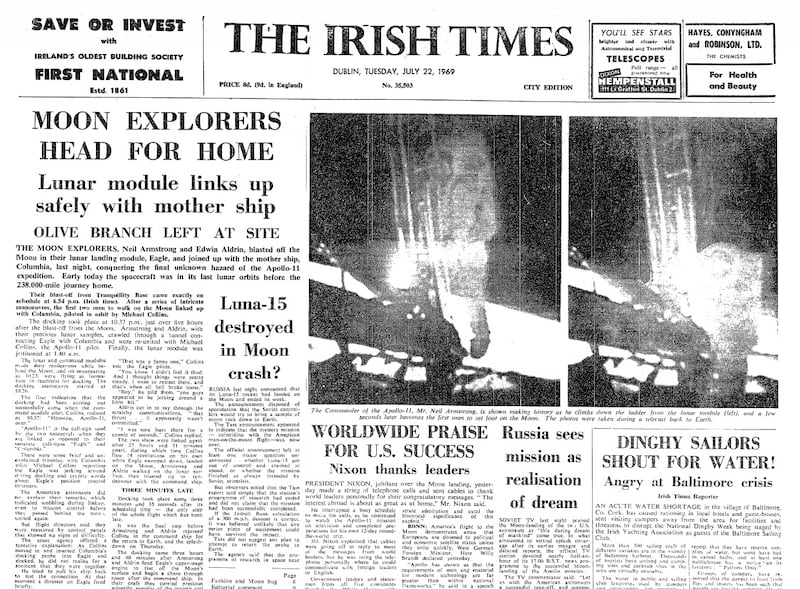
“I must confess that I am dead cold about this isolated and terrifying point in human history,” she wrote. With such misery on Earth, the mission’s vast price tag was immoral and “criminally irrelevant”.
On June 22nd, a letter writer named Esme Cox from St Mary’s rectory in Bunclody, Co Wexford, seemed to share O’Brien’s view. That said, she considered space travel worth the expense – if only to export some misery.
“I would suggest that the troublemakers of any description, eg: germ warfare enthusiasts; bigots; sadists; warmongers; makers of napalm and nuclear bombs, to name but a few, should be transported, even at enormous expense, to the Moon, and left to their own devices,” she wrote.










